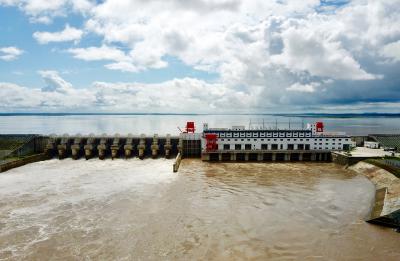By Asad Mirza The recent economic crisis, accompanied by the political turmoil in Sri Lanka, has once more made the China’s Belt and Road Initiative (BRI) the center of debate over whether it’s advantageous or not to the countries participating in it, as well as having a chance to be a success or failure.
Chinese President Xi Jinping launched the BRI with lots of celebration and exuberant expectations and ambitious plans for the countries participating in 2013.
It was regarded as an important element of the Chinese trade and foreign policy.
In essence the BRI previously known as One Belt One Road or OBOR for short, is an international infrastructure development plan that will invest in over 150 countries as well as international organizations across the globe.
The BRI is a major component of China’s “Major Country Diplomacy” strategy that requires China to assume a larger role in global affairs as a leader in line with its growing power and position.
As of August there were 149 countries included as signatories to the BRI.
Xi initially announced the strategy by calling it the “Silk Road Economic Belt” during a trip to Kazakhstan in September 2013 with reference to the proposed land routes for rail and road transport through areas of landlocked Central Asia along the famed trade routes of the Western Regions; in addition to the “21st Century Silk Road Maritime” which refers to the Indo-Pacific sea route that connect Southeast Asia to South Asia as well as the Middle East and Africa.
In reality, the BRI was also seen as an extravagant strategy to challenge American dominance over international commerce and diplomatic system.
However the recent incidents in Sri Lanka, with similar echoes heard from Bangladesh, Nepal and Pakistan has caused some China observers to believe that this is a sign of the damage the Chinese economy has suffered through the Covid pandemic.BRI appears to be in need of review with countries that are recipients being cautious of the burden of debt and its economic viability.
Let’s take a look at the initial purpose of the BRI and its expansion, as well as its short- and long-term effects on the countries that receive aid and determine if it was an success or a failure and what the US could have reacted in an effective way.
In the report he prepared in 2020, Rafiq Dossani, Director, RAND Centre for Asia Pacific Policy stated that China’s primary motive for the BRI was its long-term economic security.The sea routes of the BRI could have assisted the less developed regions that are landlocked of China like Yunnan and Xinjiang provinces by connecting these provinces with ports in the faster-growing regions of Asia.
In the same way the new land routes of the BRI were marketed as alternatives to the South China Sea, through which the majority of China’s commerce currently flows and is now becoming a region of dispute between China and the US as well as China.
Dossani further explains the reasons behind the initial reception of BRI stated that traditionally most countries prefer working with the World Bank and other multilateral lenders, who offer the borrowers with excellent practices, and make substantial loans on a meritocratic and not political basis.
However, he says further that from the perspective of a developing nation accessing the world’s surplus capital is difficult due to the nature of the risk involved in the majority of these investments.
The Asian Development Bank estimates that Asian countries are facing an infrastructure gap of $459 billion annually.
This is also the reason for the sentiments that in the early stages of the launch of the BRI was believed to be the most attractive motivation behind the BRI projects and Chinese funding.
However, nine years after its introduction, BRI has lost its appeal because of the economic crisis in many countries, and the fact that they took loans heavily from China under the guise of infrastructure development, progress , and prosperity.
Bangladesh Finance Minister AHM Mustafa Kamal has publicly blamed economically unsustainable Chinese BRI initiatives for aggravating the economic turmoil in Sri Lanka.
He states that developing countries should be cautious about getting more loans from BRI since global growth and inflation are adding to the pressure on emerging markets.
In actual fact, Bangladesh has stated that they will not accept additional loans, but only grants from Beijing.Nepal has adopted the same position.Pakistan with approximately $53 billion in funds being poured into Beijing under the auspices of BRI is also facing the same fate.
China is also investing $44 billion in Indonesia as well as $41 billion in Singapore as well as $39 billion in Russia and $33 billion in Saudi Arabia and $30 billion in Malaysia.
The protest against Chinese BRI is not confined to the Indian subcontinent, as its echoes are heard in the slow-moving $4.7 billion rail project in Kenya as well.Five years after its start the project is now ending abruptly in an empty field 200 miles away from its final destination in Uganda.
As tensions between the United States and China appear to escalate as tensions between the two countries escalate, some experts have been questioning the motives of China’s BRI.It is viewed as an attempt to trap people in debt for the poorest states, and a method to allow China to increase its control over its territory but is it an actual fact? Is the US in the wrong position to be a part of or start parallel activities?
BRI is frequently described as as a debt trap and power grab.this could be a plausible scenario.However, this idea has been disproved in recent research.Deborah Brautigam, director of the China Africa Research Initiative at Johns Hopkins University, found no evidence to suggest that Chinese banks are able to over-lend or invest in losses-producing projects to gain an advantage in these nations, in one of her studies of Chinese lending to Africa.
There is also evidence that China is not participating in the debt trap diplomacy.
Brautigam has observed that in certain countries, the IMF has been labeled as vulnerable.Also, Chinese loans weren’t responsible for raising debt-laden countries over IMF sustainable debt limits.
It should also be noted that it is not just poor nations however, but East Asian and Europe countries are also being captivated by the BRI.More than 18 European Union countries have joined the BRI.
Instead of criticizing China instead, the US should participate in the infrastructure lending of low-income countries or make it more convenient for multilateral banks to provide loans to such projects, while also reducing bureaucratic requirements.It should also begin similar initiatives in developing or under-developed countries.
To improve its image, China should improve transparency regarding BRI deals.The World Bank and other bodies have also called for greater transparency.
This could be a huge step in increasing the US and other nations’ knowledge of Chinese intentions regarding the BRI.
(Asad Mirza, a prominent political commentator who is based in New Delhi.He writes about Indian Muslims, educational, interfaith, international affairs and current events.)
asad/
.







